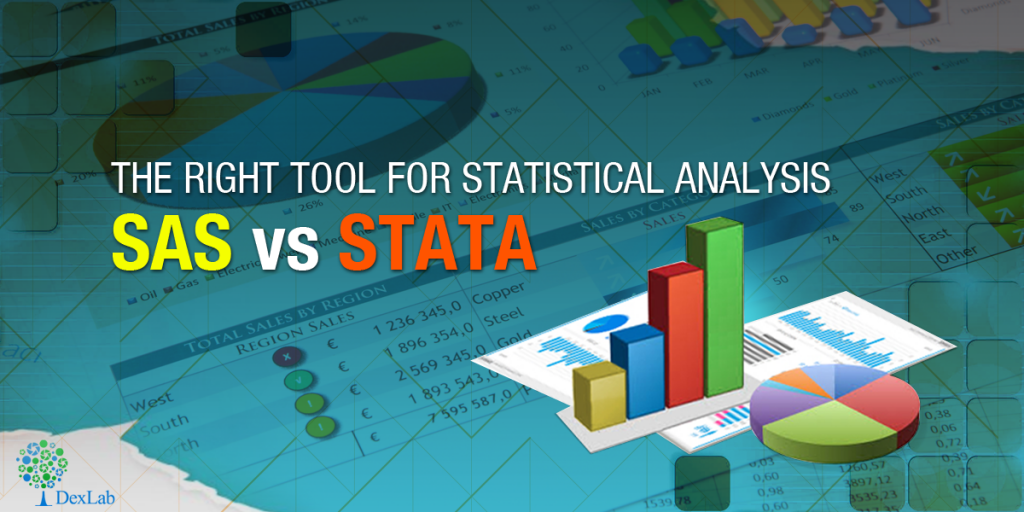Both SPSS and SAS have been around in the world of statistical analysis for several years now, so, the conundrum of which is better software for statistical analysis is an age-old question among data people.
To begin with SAS is in its version 9+ and has also enhanced its visual appeal greatly. But SPSS still comes with its popular “click and get results” interface. SPSS has also moved beyond its version 15.0+ and has also began adding different modules like its competitor SAS.
Now this question though asked frequently is still difficult to answer in one go as one might imagine that different packages have their own unique style and their own strengths and weaknesses. So, let us begin by first giving you with a quick overview of each of these software’s style and general use. Before we begin that while several statisticians feel very passionately about the statistical software of their choice and often answer such questions with a biased perspective. But we as a statistical training institute have put up this post in a dispassionate and factual manner as much as possible and this comparison is by no means a comprehensive one.
About Stata:
This is often the statistical tool of choice for beginners and also power users alike because this is a very easy to learn software which is also powerful. The best advantage associated with Stata is its one line commands which can be used by entering one command at a time. This is a mode that is highly preferred by beginners. People can also enter many commands at a time which is a mode most liked by power users. Another great advantage associated with Strata command is that it is very easy to diagnose an error and is also easy to amend them.
The aspect of data management is not as extensive with Stata as is with SAS. Many users like Strata better because it has several simple yet powerful data management commands that allow users to perform complicated manipulations of their data with relative ease. But a drawback of Strata is that it primarily works with one data file at a time so, those who would like to work with multiple files at a time will find it an arduous practice.
In terms of the actual statistical analysis Strata is proficient in handling the general statistical analyses like regressions, survival analysis, factor analysis, multivariate analysis and logistic regression. Moreover, Strata also offer a nice range of robust methods that are very user-friendly like regression with robust standard errors, multinomial logistic regression and much more. This is also the weapon of choice for those who want to analyze survey data. The only greatest weakness of Strata is probably in the realm of variance and discriminant function analysis.
About SAS:
SAS is the weapon of choice mostly for power users because of its programmability and prowess. But as this is such a powerful programming package it is also often perceived as difficult to learn. The way SAS works while analyzing is that it first involves writing the SAS program then manipulating the data to perform their analysis. So, evidently the process is more convoluted hence, if an error occurs it can be difficult to identify and correct it.
In the realm of data management SAS is highly efficient allowing users to manipulate data whichever way they want. Also SAS includes proc sql thus, it allows one to run sql queries on the SAS data files. Another advantage of SAS over Strata and SPSS is that it can work numerous data files at once. So, power users who work with multiple files at once find this feature highly useful in SAS. Also SAS has the ability to work with gargantuan data files as big as 32,768 variables while the number of records in mostly limited to the capability of one’s hard disk.
In terms of statistical analyses all the general analytical tasks are performed well with SAS but its greatest strengths lie in its use of ANOVA which is a mixed model analysis that involves multivariate analytical methods. On the other hand its weaknesses lie in ordinal and multinomial logistic regression analysis. Also in comparison to Strata its support for analyzing survey data is somewhat limited but still strong enough for most users.
It also comes with the most powerful graphic tools with the help of SAS/Graph which is very effective but also somewhat tricky to learn and understand. They mostly have to be created with Syntax language but SAS 8 does have a point and click interface.
To know more about SAS predictive modeling and SAS certification keep reading our daily posts on data analysis tools and packages and all about SAS and R programming news at DexLab Analytics.
We are also a premiere SAS predictive modeling training institute with our branches in Delhi NCR and Gurgaon and offer flexible courses for working students.
Interested in a career in Data Analyst?
To learn more about Machine Learning Using Python and Spark – click here.
To learn more about Data Analyst with Advanced excel course – click here.
To learn more about Data Analyst with SAS Course – click here.
To learn more about Data Analyst with R Course – click here.
To learn more about Big Data Course – click here.
SAS, sas analytics course, sas certification, Sas course, SAS Courses and R, SAS Predictive Modelling, Sas training centre, SAS training courses, Sas training institute


